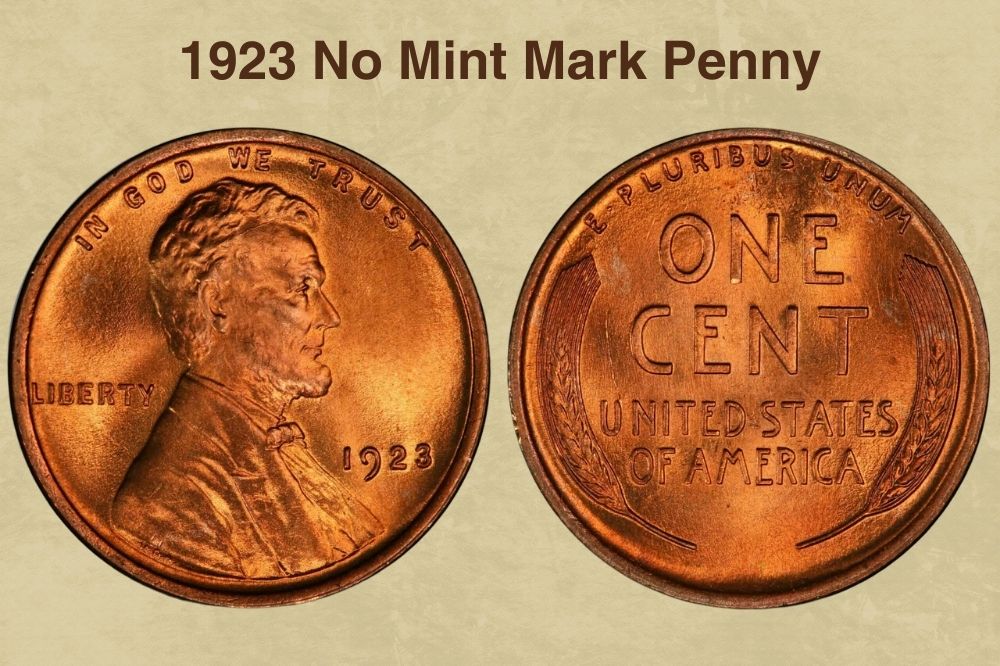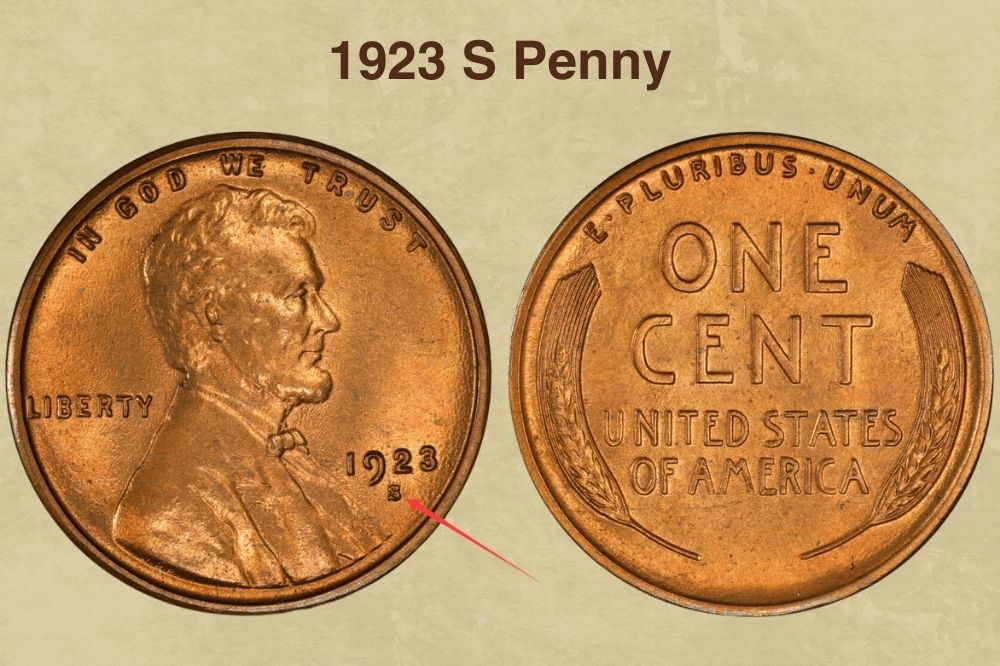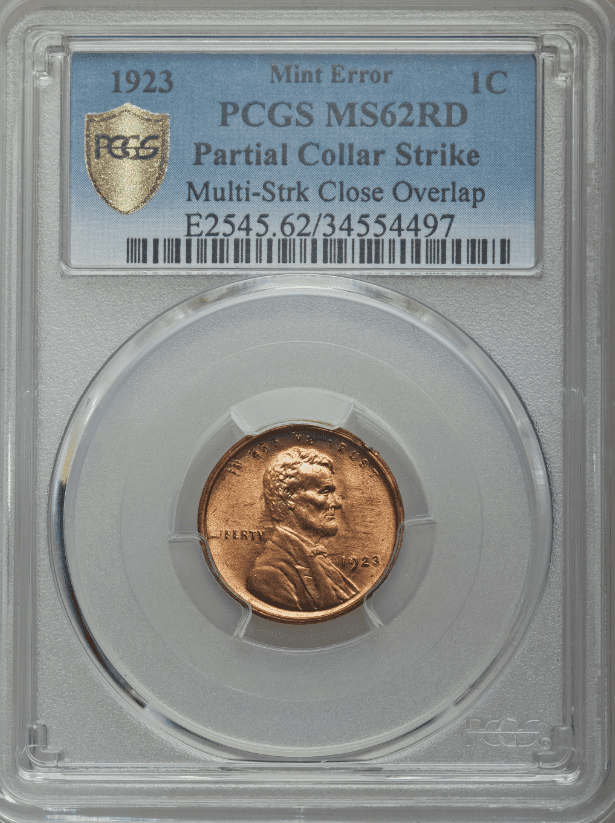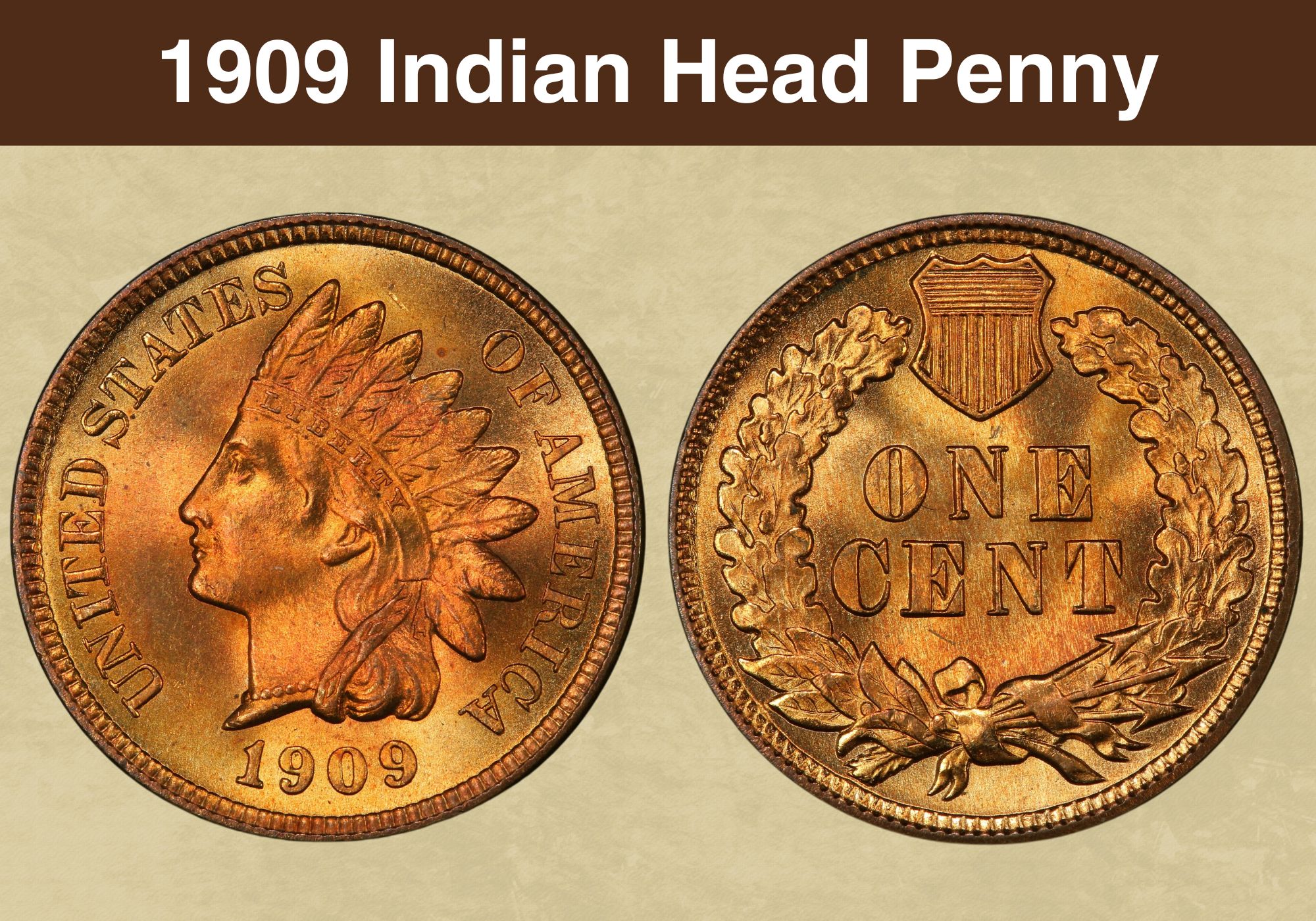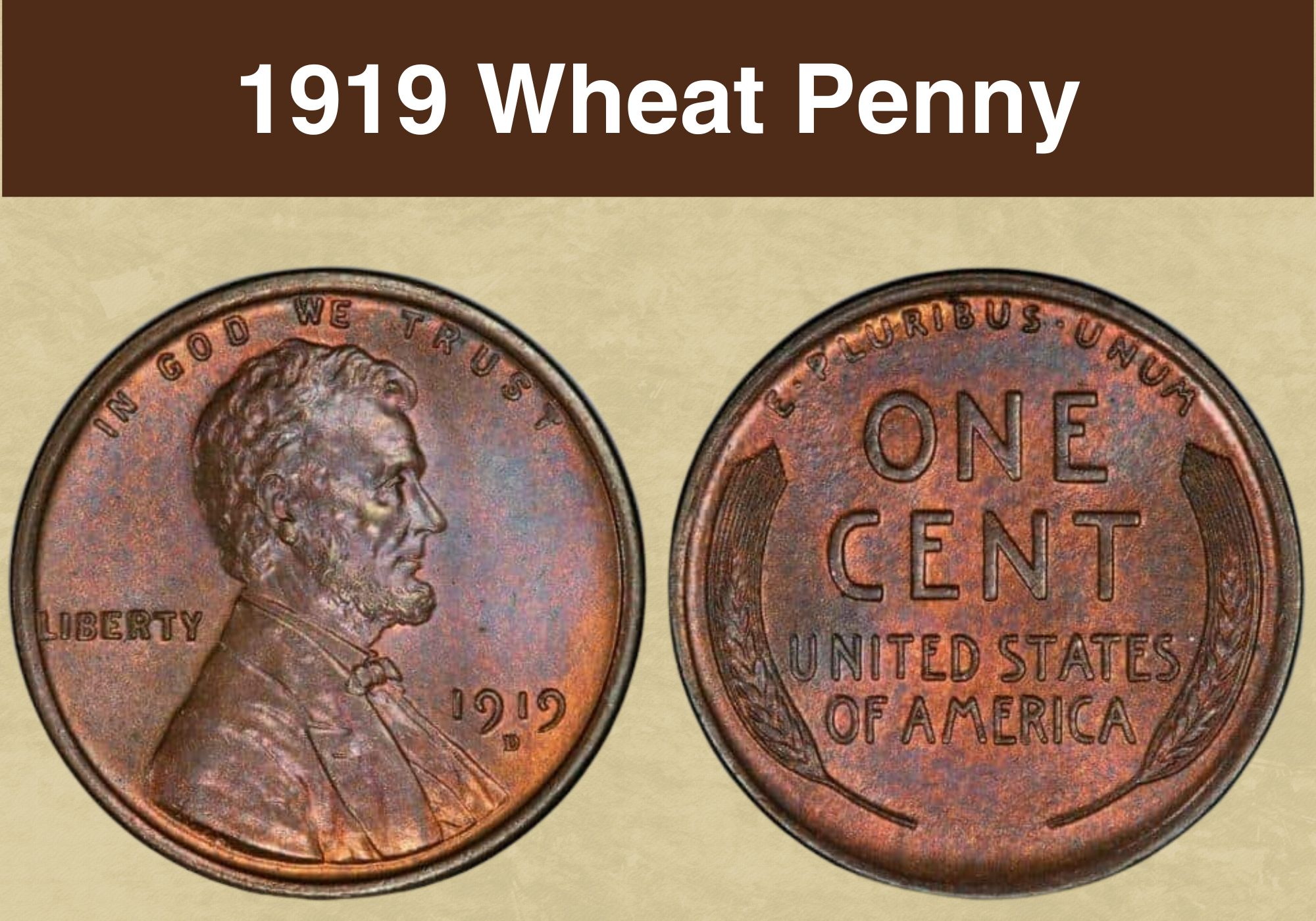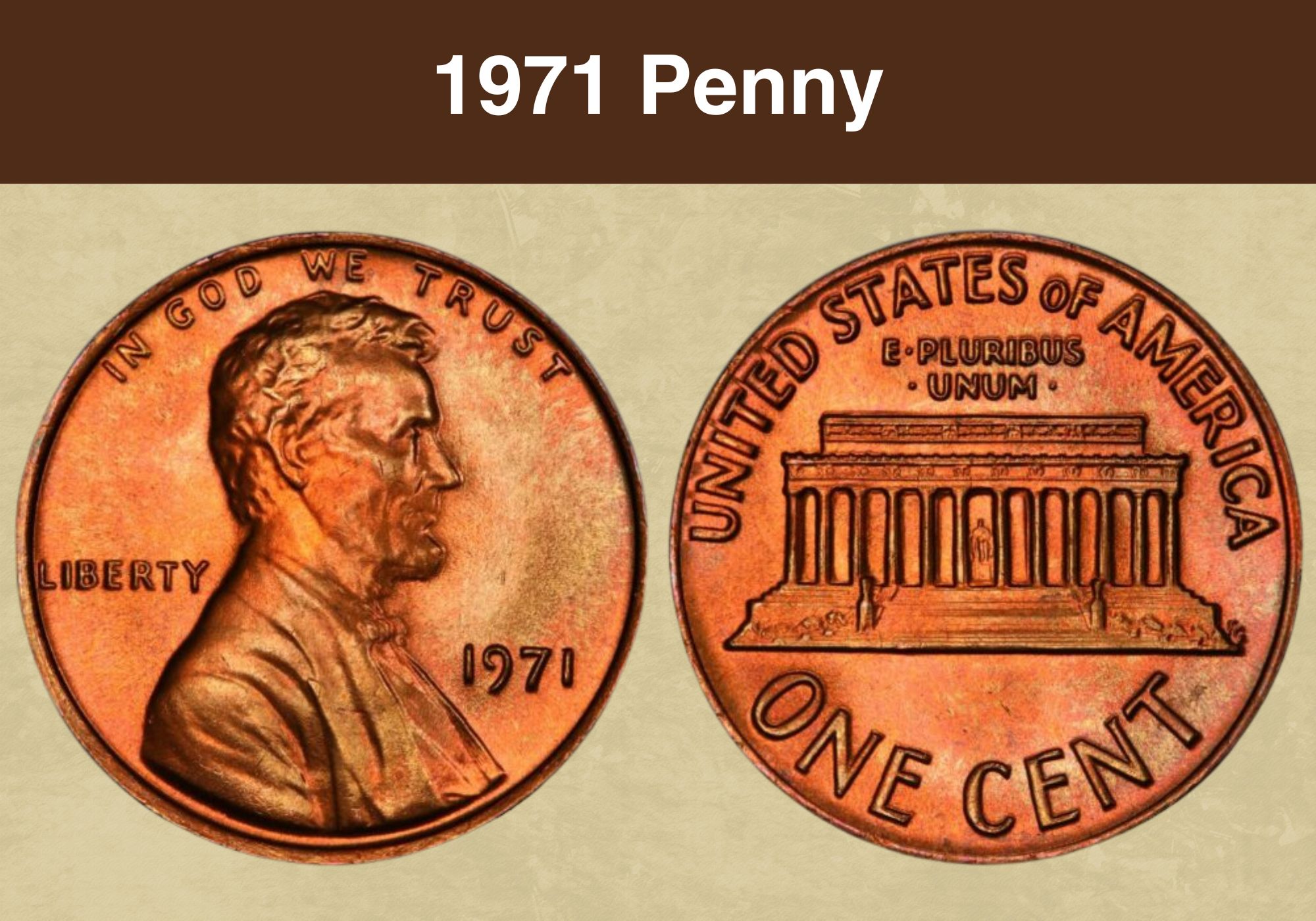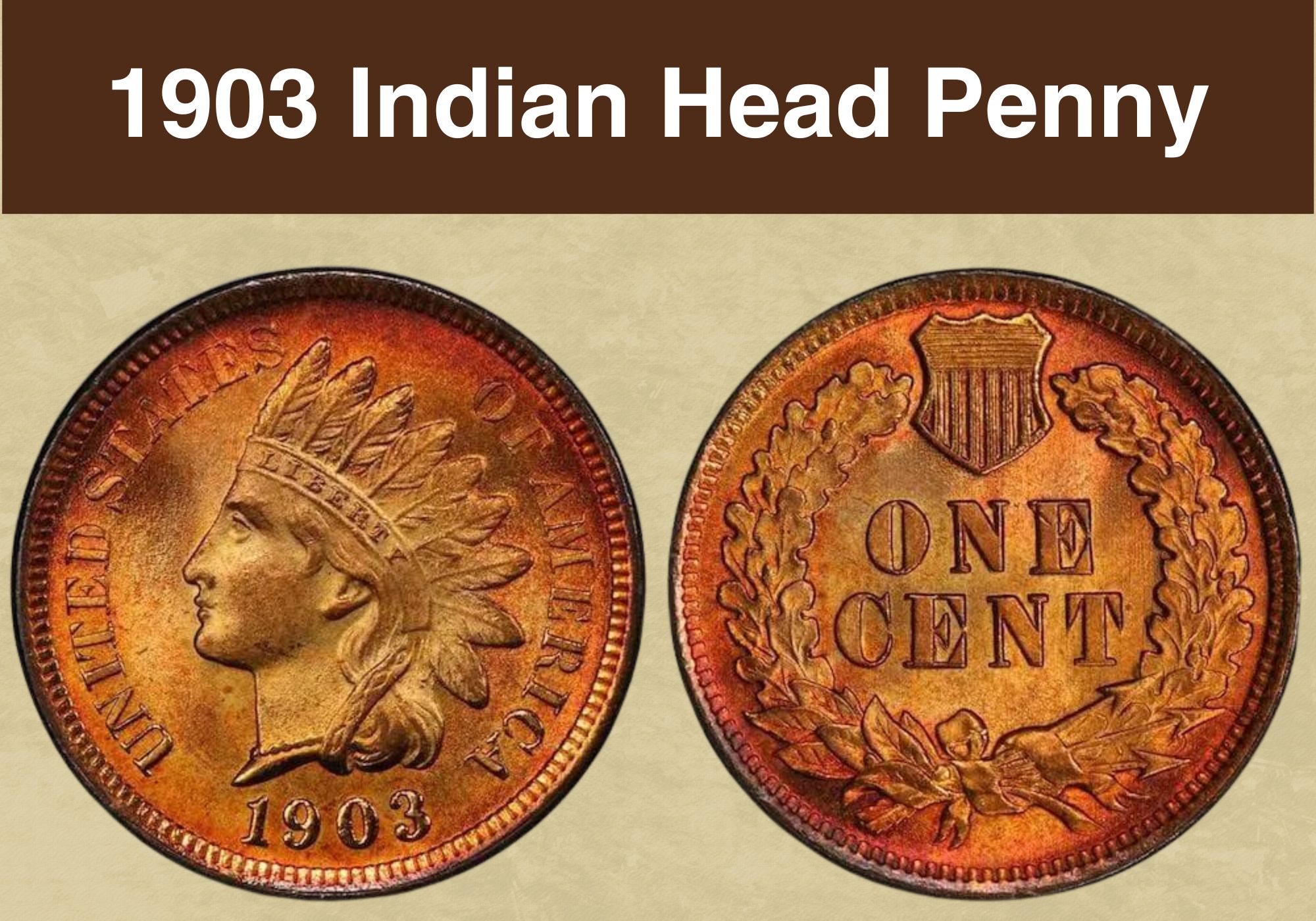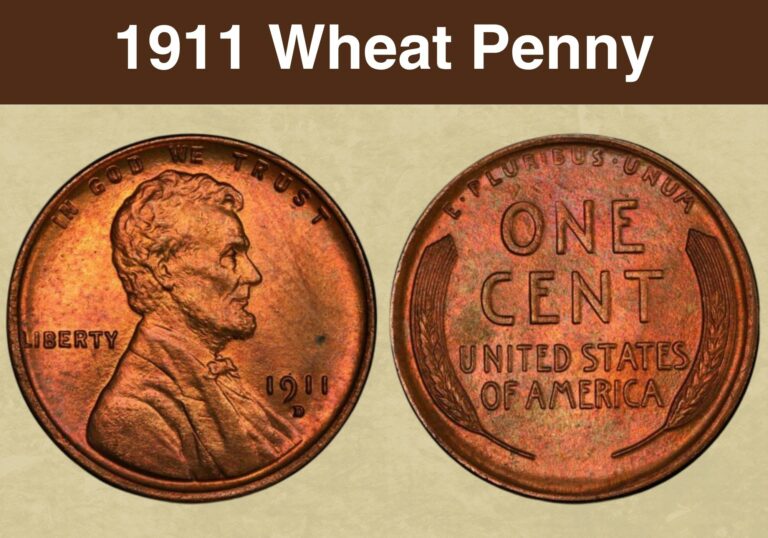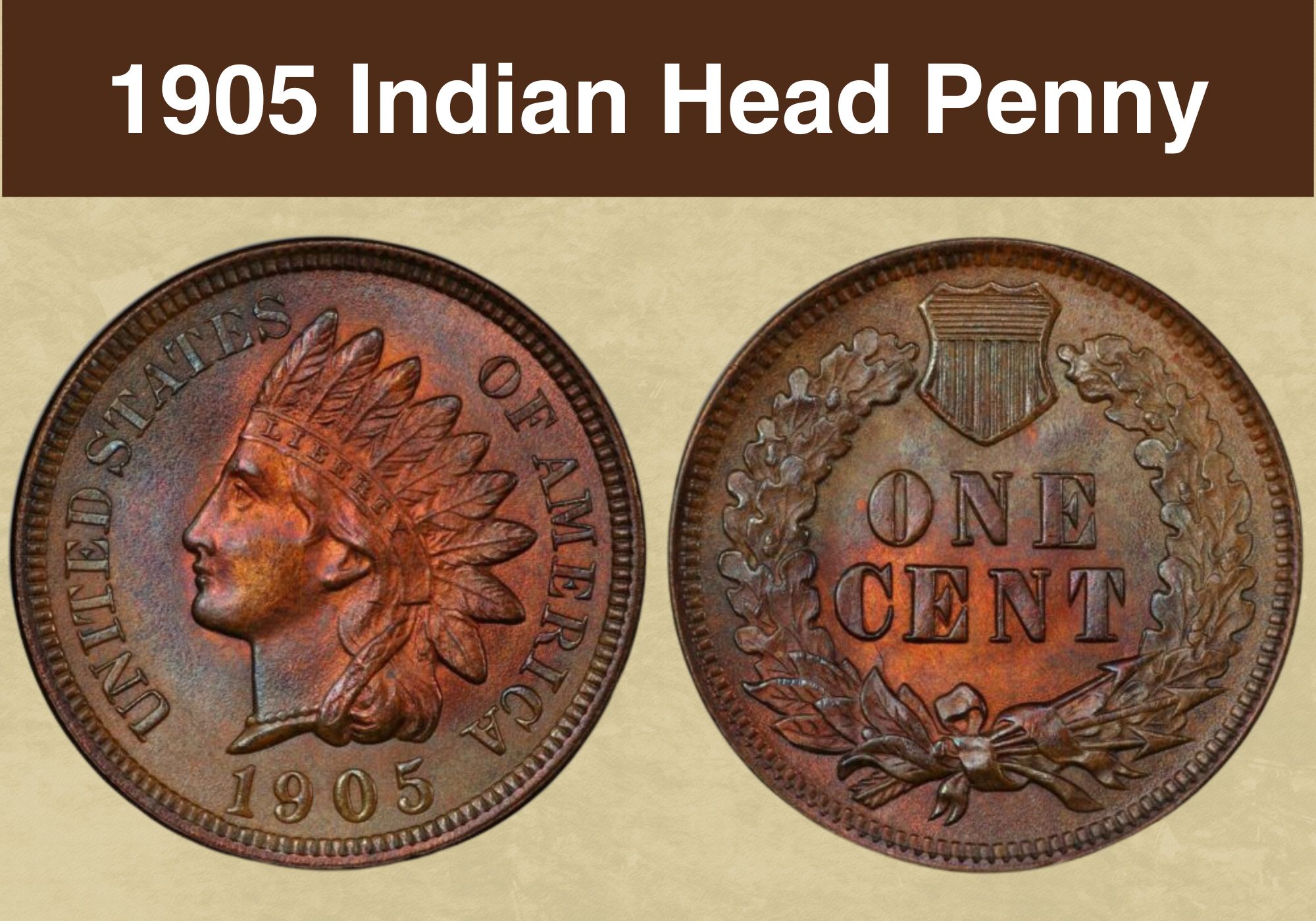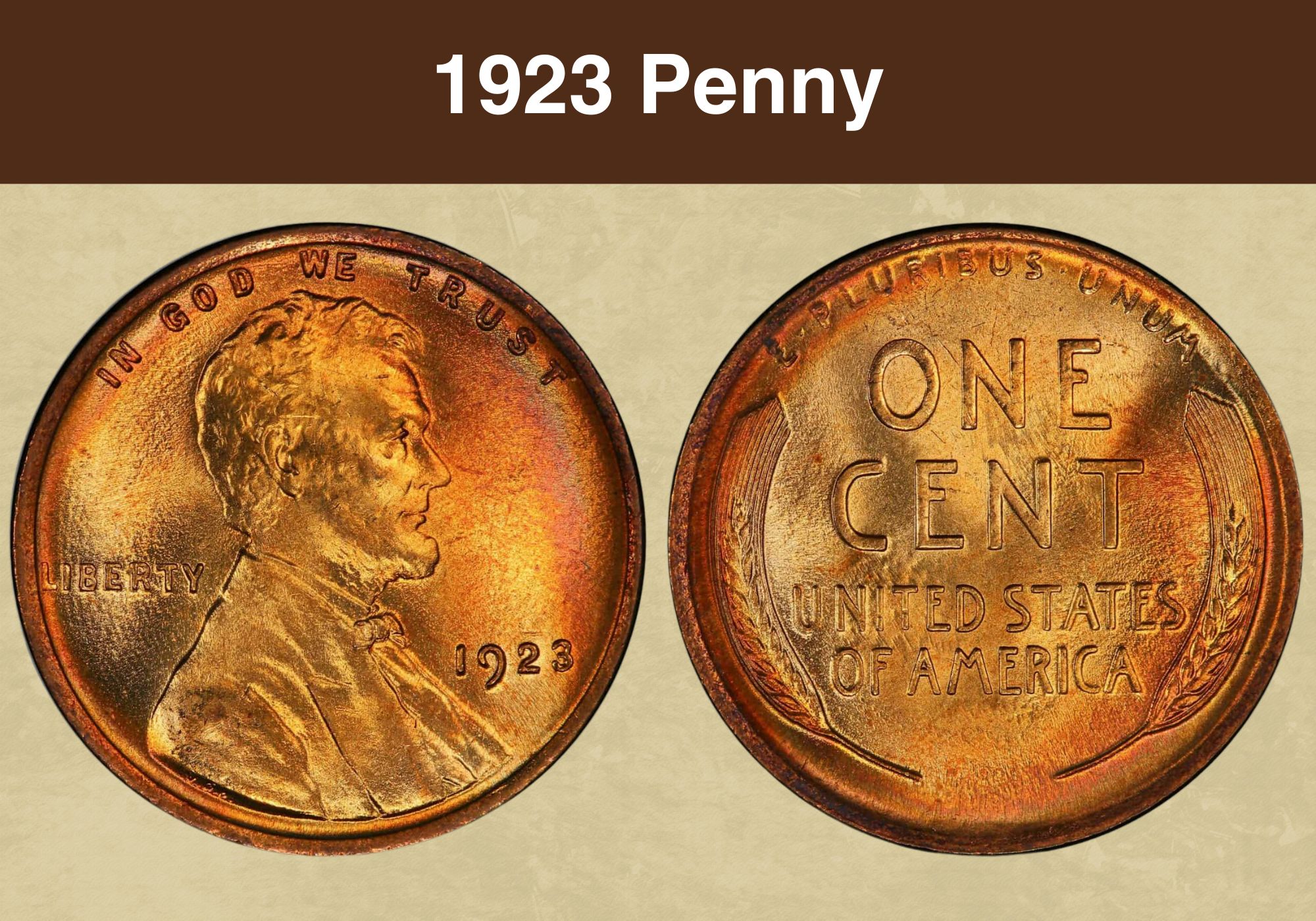
Coin Value Contents Table
The 1923 penny value is highly dependent on where it was minted. These coins were minted in just two Mints—Philadelphia and San Francisco. The Philly coins weren’t at all rare compared to other Lincoln pennies. But the ones in San Francisco are incredibly elusive, making them valuable today.
Whether you have a 1923 penny passed down to you from your grandparents’ collection or were fortunate enough to stumble upon it in spare change, consider yourself lucky. Regardless of their condition and mint mark, 1923 pennies are more expensive than their one-cent face value.
Today, we’re here to tell you everything you need to know about the 1923 penny and how much it’s worth in the modern age. Read on to see why this valuable penny would be an awesome addition to your coin collection.
1923 Penny Value Chart |
|||||||
| Mint Mark | Color | Extremely Fine | AU58 About Uncirculated | MS62 Uncirculated | MS64 Choice Uncirculated | MS65 Gem Uncirculated | |
| 1923 No Mint Mark (P) Penny Value | MS Brown | $10 | $16 | $32 | $70 | $225 | |
| MS Red Brown | – | $45 | $100 | $235 | |||
| MS Red | $55 | $130 | $350 | ||||
| 1923 “S” Penny Value | MS Brown | $45 | $240 | $435 | $850 | $3,350 | |
| MS Red Brown | – | $475 | $2,000 | $5,500 | |||
| MS Red | $1,000 | $7,000 | $60,000 | ||||
1923 Penny Grading
Most surviving 1923 pennies are well-worn. These circulated coins would sell for way more than their one-cent face value but wouldn’t be anywhere near the grand price points of uncirculated coins—aka the crème de la crème of vintage coins.
Uncirculated coins are those with razor-sharp strikes and tons of shine and luster in the high points of the design. If your coin fits this description, you likely have a mint-state coin that can be well worth hundreds or even thousands of dollars.
Work your way to becoming a coin-grading expert by watching this quick Lincoln penny grading guide. Not only does it cover the wheat pennies in production in 1923, but some modern-day Lincoln pennies as well:
| # | Grade |
|---|---|
| 1 | Basal State-1 |
| 2 | Fair |
| 3 | Very Fair |
| 4, 5, 6 | Good |
| 7, 8, 10 | Very Good |
| 12, 15 | Fine |
| 20, 30 | Very Fine |
| 40 | Extremely Fine |
| 50 | About Uncirculated |
| 60 | Mint State |
| 65 | Mint State |
| 70 | Mint State |
Please check our grading guides to know your coin scale, It’s the necessary step to know the exact value of your coin.
Check out now: How to Grade Lincoln Wheat Penny?
1923 No Mint Mark Penny Value
The Lincoln wheat penny was the first ever U.S. coin to portray a real person in its design. It came after decades of George Washington’s command to avoid putting people on coinage and currency because it was something he believed only a monarchy would do.
The first Lincoln penny came at the perfect time. It was first produced in 1909—the 100th anniversary of Abraham Lincoln’s birth. Lincoln’s portrait on the coin was designed by none other than Lithuanian emigrant Victor David Brenner, a sculptor with a fondness for Lincoln.
On the obverse of this penny, we see Abe Lincoln facing right. Above him are the words “In God We Trust” in an arc formation. On the left side of the coin is the word “Liberty,” and on the right side, the date is engraved.
The reverse has the words “One Cent” in the center, with “United States of America” written underneath. These words are surrounded by two ears of wheat—one on either side of the coin. The top rim of the reverse shows the creed “E pluribus unum.”
The Philadelphia Mint had always been the biggest producer of the Lincoln pennies, with supplementary Mints in Denver and San Francisco assisting with smaller but still sizeable mintages.
However, in 1923, the Denver Mint was too busy producing gold and silver and striking it into other coin denominations. So, that year, only the Philly and San Francisco Mints struck pennies. Pennies struck in Philadelphia had no mint mark, while San Francisco-minted ones had an “S” mark.
Let’s first zero in on the 1923 (P) pennies. Over 74 million of these pennies were struck at the Philadelphia Mint. A big majority of them were struck only in the last quarter of the year when the country started to recover from the Great War.
The mintage of 1923 (P) pennies was relatively high, so these coins are still plentiful and readily available across all grades today. That said, many of the surviving coins are well-worn.
In good condition, previously circulated 1923 (P) pennies would be worth $0.05 today. If the condition was a little bit better at an extremely fine grade, it could go up to $7. In about-uncirculated conditions, these coins at worth at least $9.50 and up to around $13.50 at grade AU58.
When it comes to uncirculated 1923 pennies, the color becomes a huge factor in determining their value. See, the 1923 pennies were struck on 95% copper. Over time, copper coins that originally looked red and vivid start to lose their color, which take on a brown hue instead.
There are three color designations a penny can have—MS Brown, MS Red Brown, and MS Red, depending on the color of the penny’s surface. Collectors pay a huge premium to get their hands on a lustrous MS Red coin, which is the most valuable of the three. MS Brown is the least coveted.
For example, at MS62 Brown, a 1923 (P) penny would be worth just $32. If it had an MS Red Brown color, it could sell for $45. But the price for an MS Red variety of this coin grade could go for as much as $55.
Although there are plenty of 1923 (P) pennies to go around, it’s quite difficult to look for fully red gems in high mint-state conditions. But when you do find them, you’ll be rewarded with their high price point.
At a high grade of MS65, an MS Red coin could sell for $350. This is already quite high, but when compared to MS66 and MS67 gems, which can be valued today at $1,1000 and $5,000, respectively.
Also read: 13 Most Valuable Wheat Penny Worth Money
1923 S Penny Value
There were 8.7 million pennies struck in San Francisco in 1923. Like their Philly-minted cousins, these coins were only made toward the end of the year. You’ll know these are Frisco-minted coins if they have a tiny “S” mint mark below the date on the obverse.
Because the mintage of this issue is quite low, the coins are very scarce and hard to find. Unsurprisingly, they’ve become sought-after and valuable today because of it.
The majority of the 1923 S pennies were made with worn dies, so many of the coins have a weak and even incomplete strike with shallow details. However, because this coin is so elusive, they’re worth a hefty price in all grades—even circulated ones.
In good, circulated condition, one of these coins could sell today for around $2.50. That’s 250 times its original face value of one cent! In extremely fine condition, this price goes up to $65. And at AU58, you could potentially earn $200 from this coin.
The hunt for 1923 S pennies with bold strikes and sharply defined design elements is frustrating for many collectors. It’s especially challenging to look for mint-state coins that have their full, red luster still intact. Because of this, MS Red coins in uncirculated conditions are extremely valuable today.
Let’s take a look at the MS64 1923 S penny. In MS Brown, it already has a high value of $850. In MS Red Brown, this increases to $2,000. And when the full red tones are still present in this coin, it can go upwards of $7,000.
Of course, MS Red coins are most valuable in fine gem condition. At a vibrant and lustrous grade of MS65, a 1923 S penny would cost a mighty price of $60,000 today. Only two coins have ever been given an MS65 Red grading.
Also read: 12 Most Valuable Lincoln Penny Worth Money
Rare 1923 Penny Error List
Over 83 million pennies were struck in 1923. With this high mintage, it comes as no surprise that there are several of them that have mint errors. These errors can sometimes increase the value of the 1923 penny, so keep an eye out for them when assessing your own coins.
1923 Penny Obverse Struck Through Thread Error
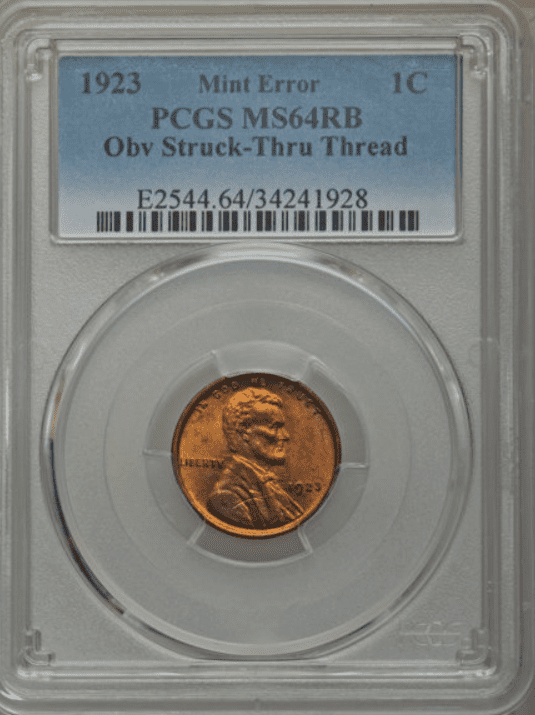
One interesting error that had been found on a 1923 penny is a struck-through error on the obverse. A struck-through error occurs when a foreign object somehow finds its way on top of a planchet right before the die strikes it. This object then leaves an impression on the coin.
This error was once found on an MS64 Red Brown coin. On Lincoln’s chest and shoulder, there was a stark, receded line that goes through the planchet. It seems to have been imprinted there by a piece of thread. The coin ended up selling for over $150.
1923 Penny Struck 15% Off-Center Error
Another interesting error that’s been seen on a 1923 penny is the off-center strike—possibly the most popular mint error in coinage.
This error happens when the coin is accidentally stamped by the die slightly askew and off the center. As a result, part of the design is missing, and a chunk of the planchet is left blank. If the design is fully on the planchet, it cannot be considered an off-center strike.
One 1923 MS61 Brown penny had once been found with a strike that was about 15% off-center. The words “WE TRUST” are no longer visible on this coin due to the strike. It left a crescent-shaped area of the coin blank, by the seven o’clock position. It eventually sold for almost $500.
1923 Penny Uncentered Broad Strike Error
A broad-struck coin is sometimes confused with a coin that is struck off-center, but they’re hardly the same.
Both errors are made because of the wrong placement of the coin, leading to an uncentered strike. But the difference is that a broad-struck coin retains the entire design, not cut off on the edges.
A broad strike error was once found on a 1923 (P) XF45 penny, which sold for around $50. If it had been a higher grade—perhaps a mint-state coin—it definitely would have been more valuable with this error.
1923 Penny Partial Collar Strike Error
A coin gets a partial collar strike error when the planchet sits askew on the die collar before it is stamped. As a result, the die drives some of the metal into the collar as it strikes the planchet, pushing it past the boundaries of the coin.
The coin ends up looking wide and “stepped on” because of it. This strange appearance is most noticeable on the edges of a coin.
A 1923 MS62 penny that had been found with a partial collar strike error once sold for over $310.
Also read: 17 Most Valuable Indian Head Penny Worth Money
Where to Sell Your 1923 Penny ?
Now that you know the value of your coins, do you know where to sell those coins online easily? Don’t worry, I’ve compiled a list of these sites, including their introduction, pros, and cons.
Check out now: Best Places To Sell Coins Online (Pros & Cons)
1923 Penny FAQs
Which 1920s penny is valuable?
There are several Lincoln pennies struck in the 1920s that are elusive and therefore valuable today. Key dates during this decade include the 1923-S and the 1924-D, both quite scarce and hard to find.
Another key piece in this series is the 1922 D “Plain” penny. This penny was minted in Denver and should have been struck with the tiny “D” under the date on the obverse, but it had no such mark.
What year is the richest penny?
The most valuable penny in history was minted in 1943. That year, all pennies had transitioned to zinc-plated steel from their bronze composition from the previous years. But one Denver-minted penny was accidentally still struck on bronze.
Only a single example of this coin is known to exist, and it’s worth over $1.7 million.
How can you tell a rare penny?
Aside from key dates, you can also tell that a penny is rare based on its condition and color. If a 1923 penny has outstanding eye appeal and significant luster, it might be an uncirculated coin, which is quite rare. And if it has a full, vibrant red color, it is likely even more scarce.
Is a 1922 penny rare?
Yes, the 1922 Lincoln wheat penny is relatively rare compared to other issues in the series. While most other pennies were struck in two or three Mints, the 1922 run happened only in Denver, making it an elusive issue.
The 1922 penny also has rare varieties that collectors like to hunt down, such as the “plain” penny, and pennies with either a weak or overly strong reverse strike.
Also read: 11 Most Valuable Wheat Penny Errors

